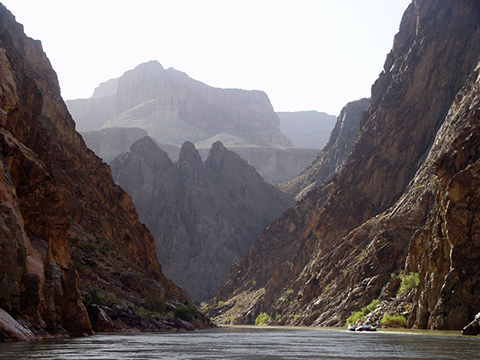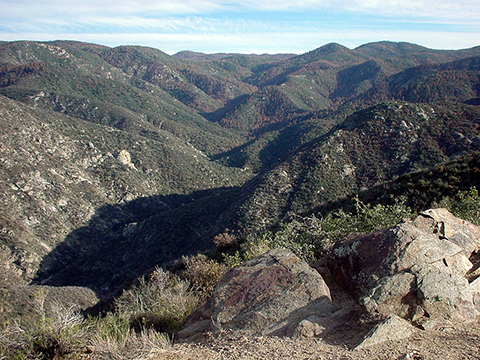Prelude
Relative to the Archean, the Proterozoic geologic record is more well-preserved and better-documented. Proterozoic rocks are mostly exposed in the stable interiors of most continents and include an abundance of igneous and metamorphic rocks, as well as thick sequences of sedimentary rocks. The tectonic processes that occur today were also active during the Proterozoic Eon, and are recorded in the rocks and structures in places like Arizona's Grand Canyon. Significant changes in Earth's biosphere and atmosphere also occurred during this middle portion of Earth's geologic history, setting the stage for the flurry of events that took place in the last half-billion years.
|
|
|
|
Figure 9-1. Proterozoic rocks in Arizona. The Trinity Gneiss forms the three distinctive peaks between 91-Mile Creek and Trinity Creek in the Inner Gorge of the Grand Canyon (left). The rugged granitic slopes of Bradshaw Mountains west of highway I-17 in central Arizona (right). Remember to click on the highlighted images to see larger versions. |
|
What Will You Do Today?
A. The Proterozoic Eon - Review Proterozoic geologic time and geology
B. A Correlated History of the Earth: Proterozoic - Learn more about the Proterozoic Eon and its tectonics, impact events, life forms, etc.
C. Proterozoic Geology of the Grand Canyon - Explore the Grand Canyon's Proterozoic geology
D. Geology of the Inner Gorge - Decipher the earliest geologic history of the Grand Canyon with this composite sequence diagram


